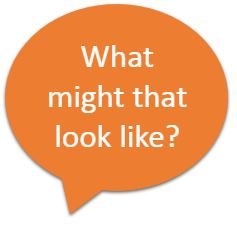| FIRST LEVEL | TECHNOLOGIES | |
| Experiences and Outcomes | Benchmarks | |
| Organiser – Computing Science | • Demonstrates an understanding of the meaning of individual instructions when using a visual programming language (including sequences, fixed repetition and selection).
• Explains and predicts what a program in a visual programming language will do when it runs for example, what audio, visual or movement effect will result. |
|
|---|---|---|
| Understanding and analysing computing technology | ||
| I understand the instructions of a visual programming language and can predict the outcome of a program written using the language.
TCH 1-14a Links to: Numeracy & Maths – Shape, Position & Movement MTH 1-17a, Ideas of Chance & Uncertainty MNU 1-22a |
||
 |
Progression |
|
| I can/am able to | I can/am able to | I can/am able to |
| Recognise, say or show what block code symbols mean. | Recognise or show what fixed repetition block code symbols mean. | Recognise or show what a selection block code symbol means. |
| Describe or show what a sequence of block code symbols will achieve | Begin to describe or show how selection & repetition affects the outcome of a sequence of block code symbols. | Describe or show how selection & repetition affects the outcome of a sequence of block code |
| Begin to predict what a visual program will do when it runs e.g. predict from printed block code symbols what the outcome will be | Predict what a visual program with fixed repetition (loop) will do when it runs e.g. predict from printed block code symbols what the outcome will be. | Predict what a visual program with fixed repetition (loop) and selection (IF statement) will do when it runs e.g. predict from printed block code symbols what the outcome will be. |
|
“When learning about Coding & Programming learners might: * Tinker with programmable devices, while introducing a new level of complexity, such as an app to control the device or more functions, i.e. Sphero or Dash & Dot (concrete) * Play with and explore new physical computing devices, such as Sphero and Dash & Dot and are able to control them with an app. They should be able to use these devices to navigate obstacle courses, play games, such as bowling and races (pictorial and abstract) * Identify basic functions of a coding language, such as code.org or Scratch – for example, there are ‘movement’, ‘control’ and ‘loop’ blocks and say what these do * Use block code to solve simple logic problems, such as playing code.org Hour of Code or Kodable games * Analyse a set of instructions and then identify and fix errors; the teacher presents a short section of blockcode (eg Scratch Jr/ Scratch) and asks the learners to predict where the sprite will end up on the screen. The challenge could be getting from the school to the shop along a safe route. * Look at a short algorithm,or set of instructions, and identify if it will work as required or if it needs modification – this could be simple challenges on code.org or Kodable When learning about How a Computer Works learners might: * Explain that input devices are user-controlled and send instructions to the computer’s ‘brain’, or processor, which then leads to a computer-controlled output – a short topic around ‘what a computer is’ would be effective in ensuring learners can identify basic components, such as input and output devices and processors * Create content for a wall display, such as a labelled diagram of how popular devices work in terms of input -> process -> output, for example: when you press the volume button on the TV and the TV follows its algorithm to decide it needs to turn the volume up and then the loudspeaker gets louder” |
||
|
|
||
|
|
||
|
|
||
|
|
||
 From Education Scotland National Improvement Hub “What digital learning might look like”:
From Education Scotland National Improvement Hub “What digital learning might look like”: